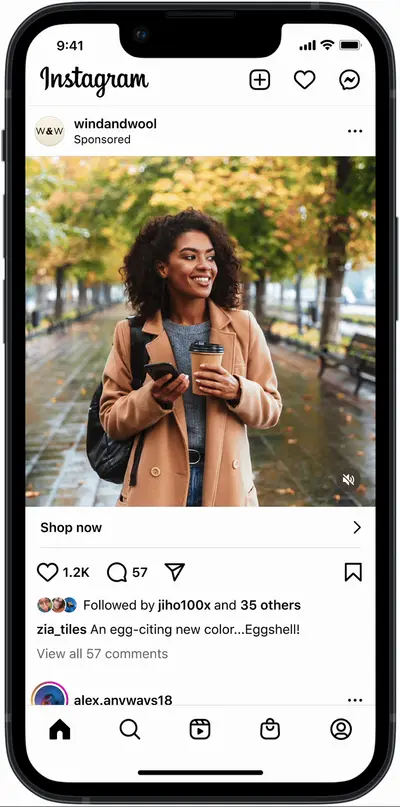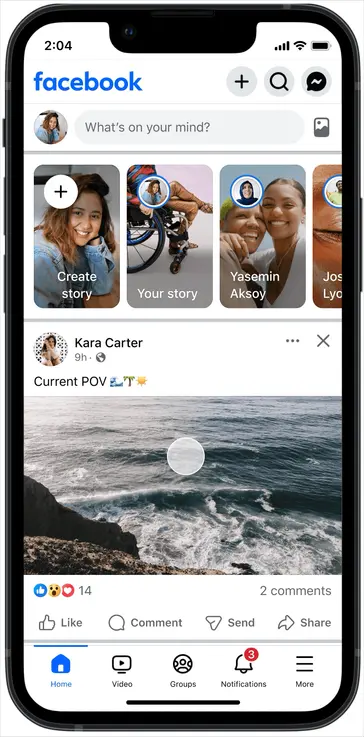-
Meta is rolling out enhanced omnichannel ads, AI tools, and new placements to drive sales across online and physical stores.
-
Advertisers will benefit from deeper insights, product recommendations, and improved creator collaborations to maximize campaign performance.
-
New generative AI tools will help brands create personalized shopping experiences, further enhancing customer engagement.
Meta is rolling out a host of powerful new AI-driven tools to help brands optimize their advertising strategies across Facebook, Instagram, and soon, Threads. These tools are designed to help brands better connect with customers, drive more sales, and maximize ad spend efficiency.
The new features, including omnichannel ads, AI-powered shopping tools, and enhanced ad placements, are a testament to Meta’s commitment to integrating AI into the marketing world.
The company’s focus on AI technology, specifically the Andromeda AI model, is set to revolutionize the way advertisers create and manage campaigns. These updates provide more efficient targeting, better engagement metrics, and a variety of new ad placements, allowing brands to maximize the effectiveness of their advertising spend.
Meta's New AI-Driven Tools to Maximize Sales
Meta’s Andromeda AI model lies at the core of its new ad toolset, designed to enhance ad targeting by analyzing vast amounts of data to predict the most relevant ads for each user. This system processes tens of millions of ads across Facebook, Instagram, and Threads, continuously refining the algorithm to deliver the most effective content to users at the optimal time.
By leveraging machine learning, Meta's system ensures that brands can optimize their ads for better engagement and higher conversion rates.
For brands, this means less guesswork and more precision in reaching the right audience. AI can now predict which creative elements resonate best with different segments, improving campaign performance without the need for manual adjustments.
By integrating this intelligence, Meta helps brands spend their budgets more efficiently, focusing on ads that are most likely to generate results. For consumers, it means seeing ads that are more personalized and relevant to their interests, making the browsing experience more engaging.
Omnichannel Ads: Boosting In-Store and Online Sales
Meta is expanding its omnichannel ad offerings, designed to bridge the gap between online and physical retail. These ads not only guide users to nearby stores but also show them which products are in stock, increasing the chances of driving foot traffic. In addition, brands can offer personalized discounts that make in-store shopping more appealing.

Source: Meta
This shift to omnichannel strategies is proving effective—brands using omnichannel ads have reported up to a 15% lower media CPA and a 12% higher return on ad spend (ROAS).
Take American Eagle as an example: using omnichannel ads, they achieved a 48% higher ROAS from their target demographic of 18-24-year-olds, according to Craig Brommers, American Eagle's CMO.
This indicates that younger consumers are particularly responsive to these kinds of ads, which blend physical and digital shopping experiences. With more brands expected to integrate this functionality by the holiday season, omnichannel ads will become a key strategy for driving both in-store visits and online purchases.
Advantage+ Sales Campaigns and AI Optimizations
Meta is introducing enhanced features within Advantage+ sales campaigns that will significantly improve Facebook and Instagram Shop campaign efficiency. These tools now allow brands to display additional products from their catalogs, making it easier to recommend complementary items to customers.
For instance, a brand promoting jackets from their spring collection can now have the system automatically suggest a dress or other items that complement the initial product. In early tests, brands using this feature reported a 14% increase in ROAS, with some regional markets seeing even higher improvements.
Additionally, Meta has integrated the use of creator content into Advantage+ catalog ads, giving brands access to influencer-driven promotions alongside their regular ads. This collaboration brings a more personal touch to product ads, leveraging the trust and engagement that influencers have with their audiences.

Source: Meta
Meta’s ability to seamlessly merge influencer marketing with traditional catalog ads is opening up new avenues for both creators and brands to collaborate and drive sales in a more integrated, effective way.
Enhanced Shopping Features for Brands and Consumers
Meta is also significantly improving the shopping experience through its new AI-powered shopping features. One of the key updates is a simplified checkout process for Advantage+ Shops ads. This feature allows consumers to build their carts within the Instagram or Facebook app and then complete their purchases directly on the brand’s website.
It’s designed to streamline the process and reduce friction, which is often a barrier to online conversions.

Source: Meta
The new checkout flow will first be tested in markets like Australia and Taiwan, with a global rollout expected later. By keeping the shopping experience seamless, Meta aims to lower cart abandonment rates and increase conversions for brands.
Additionally, the integration of AI-powered product recommendations allows customers to discover items they may not have considered, further enhancing their shopping experience and increasing the likelihood of additional purchases.
Generative AI Use Cases for Retail
Meta is continuing to explore the potential of generative AI in the retail space.
One exciting development is the introduction of virtual try-on technology, which allows customers to see how clothing items would look on their digital avatars before making a purchase. This is particularly useful for fashion retailers looking to enhance the online shopping experience and reduce the uncertainty that often comes with purchasing clothes online. By allowing consumers to virtually try on clothes, Meta hopes to improve decision-making and boost buyer confidence.

Source: Meta
Furthermore, Meta is improving text generation tools to make it easier for brands to create personalized ad copy that resonates with their target audience. These AI-driven tools can automatically generate copy tailored to the interests and preferences of different consumer segments, allowing brands to create more engaging and effective ad content without having to manually craft each message.
New Ad Placements: Ads in Facebook Notifications
In an effort to increase engagement and re-engage users who have shown interest in specific products, Meta is testing a new ad placement format in Facebook notifications. This feature will allow advertisers to target users who have interacted with their content in the past, making it easier to remind them about offers or promotions.

Source: Meta
With the rise of personalized marketing, this new format gives brands another way to stay top-of-mind with potential customers, encouraging them to return to the platform and complete a purchase.
Alongside this, Meta is testing a feature that allows advertisers to request email addresses before sharing promo codes with consumers. This new approach will help businesses build deeper connections with their audience by collecting valuable customer data that can be used for future campaigns.

Source: Meta
With this new functionality, Meta is providing brands with even more tools to nurture customer relationships and boost long-term sales.



